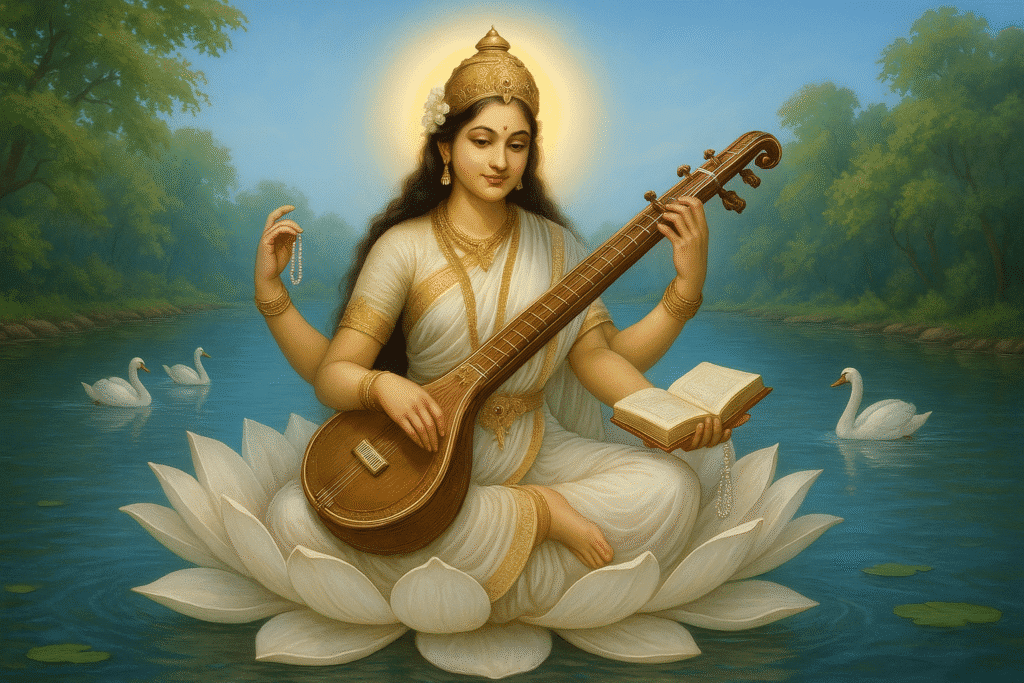Introduction to Basant Panchami
Basant Panchami, also known as Vasant Panchami or Saraswati Puja, is a vibrant Hindu festival that heralds the arrival of spring and pays homage to Goddess Saraswati, the deity of knowledge, wisdom, music, and art. Celebrated on the fifth day of the Magha month in the Hindu lunar calendar, typically falling in late January or early February, this festival is a beautiful blend of spirituality, cultural traditions, and the joy of seasonal renewal. In 2025, Basant Panchami will be observed on January 29, marking a day of devotion, learning, and festivity across India and among Hindu communities worldwide.
The Significance of Basant Panchami
Spiritual Importance
Basant Panchami is deeply rooted in devotion to Goddess Saraswati, who is revered as the source of intellectual and creative enlightenment. Devotees believe that worshipping her on this day enhances wisdom, sharpens intellect, and fosters artistic expression. The festival is particularly significant for students, scholars, artists, and musicians, who seek her blessings for success in their pursuits.
Seasonal Celebration
The term “Basant” translates to “spring,” and the festival celebrates the transition from winter’s chill to the warmth and vibrancy of spring. Fields bloom with mustard flowers, their golden hues symbolizing prosperity and renewal. This seasonal shift is celebrated with enthusiasm, as it signifies new beginnings and the rejuvenation of nature.
Mythological and Historical Context
Legends of Saraswati
Hindu mythology associates Basant Panchami with the divine creation of Saraswati by Lord Brahma, the creator of the universe. According to legend, Brahma, upon observing the chaos in the world, created Saraswati to bestow the gift of knowledge and speech, bringing order and harmony. Her serene presence, depicted with a veena (musical instrument), a book, and a rosary, symbolizes the power of wisdom and creativity.
Historical Celebrations
Historically, Basant Panchami has been a significant cultural event. Ancient texts and traditions indicate that the festival was celebrated in royal courts, where poets, scholars, and musicians showcased their talents. In regions like Punjab and Bengal, the festival has long been associated with kite-flying and community gatherings, reflecting its role as a social and cultural unifier.
Rituals and Traditions
Worship of Goddess Saraswati
The day begins with devotees taking an early bath and setting up a small altar adorned with an idol or image of Saraswati. Offerings of white flowers, sandalwood, and sweets are made, symbolizing purity. Books, pens, and musical instruments are placed before the goddess, as devotees pray for intellectual growth and creative inspiration. Special pujas are conducted in homes, schools, and temples, with mantras chanted to invoke her blessings.
Vidya Arambham: A Day for Learning
One of the most cherished traditions is Vidya Arambham, the initiation of young children into education. On this day, toddlers are introduced to writing their first letters, often guided by elders, in a symbolic gesture of beginning their learning journey under Saraswati’s guidance. Schools and educational institutions organize special prayers and cultural programs to honor the goddess.
The Color Yellow: Symbol of Vibrancy
Yellow, representing the mustard fields and the vibrancy of spring, dominates Basant Panchami celebrations. Devotees wear yellow clothing, prepare dishes like saffron rice and mango-based sweets, and decorate spaces with yellow flowers. This color symbolizes energy, optimism, and the blossoming of knowledge.
Regional Variations in Celebrations
North India: Kite-Flying and Festivities
In states like Punjab, Haryana, and Uttar Pradesh, Basant Panchami is synonymous with kite-flying. The skies come alive with colorful kites, as communities gather to celebrate the joy of spring. Traditional dishes like khichdi and meethe chawal (sweet rice) are prepared, and folk music fills the air.
West Bengal: Saraswati Puja
In Bengal, Basant Panchami is observed as Saraswati Puja with immense devotion. Educational institutions become hubs of activity, with students decorating altars and performing cultural programs. The festival coincides with the Bengali tradition of Anandamoyee Puja, where Saraswati is worshipped as the embodiment of bliss.
Other Regions
In South India, the festival is quieter but still significant, with prayers offered to Saraswati in homes and temples. In states like Gujarat and Rajasthan, the festival aligns with agricultural celebrations, as farmers pray for a bountiful harvest. Each region adds its unique flavor, making Basant Panchami a diverse yet unified celebration.
Cultural and Social Impact
Basant Panchami transcends religious boundaries, fostering a sense of community and cultural pride. It encourages the pursuit of knowledge and creativity, values that resonate universally. The festival also promotes environmental awareness, as it celebrates nature’s renewal and the importance of living in harmony with the seasons.
In modern times, Basant Panchami has inspired initiatives like book fairs, art exhibitions, and educational workshops, reflecting its enduring relevance. Social media platforms buzz with vibrant images of yellow-clad devotees, kites soaring high, and beautifully decorated Saraswati idols, showcasing the festival’s global appeal.
Basant Panchami in the Modern Era
While rooted in tradition, Basant Panchami adapts to contemporary contexts. Virtual pujas and online cultural events have become common, especially among the diaspora. Environmental consciousness has also influenced celebrations, with eco-friendly idols and sustainable practices gaining popularity. The festival’s emphasis on education resonates strongly in today’s knowledge-driven world, inspiring lifelong learning and innovation.
Conclusion
Basant Panchami is more than a festival; it is a celebration of life’s intellectual and creative essence, intertwined with the rhythms of nature. By honoring Goddess Saraswati and embracing the arrival of spring, devotees reaffirm their commitment to wisdom, art, and renewal. As mustard fields sway under azure skies and kites dance in the breeze, Basant Panchami reminds us to seek knowledge, cherish creativity, and welcome new beginnings with open hearts.



